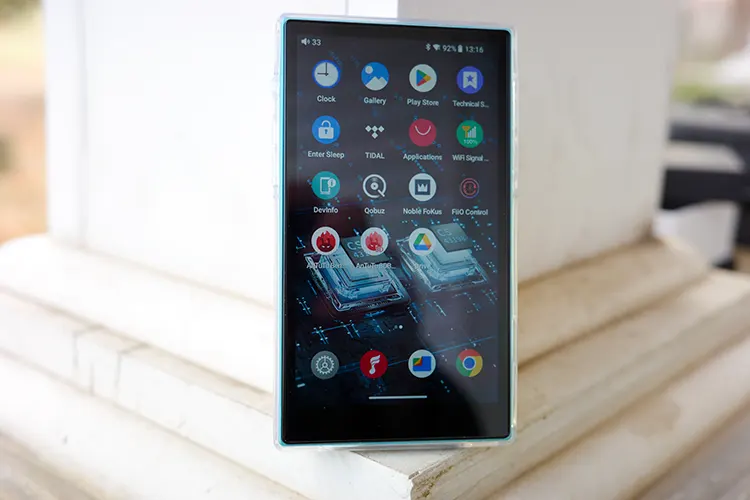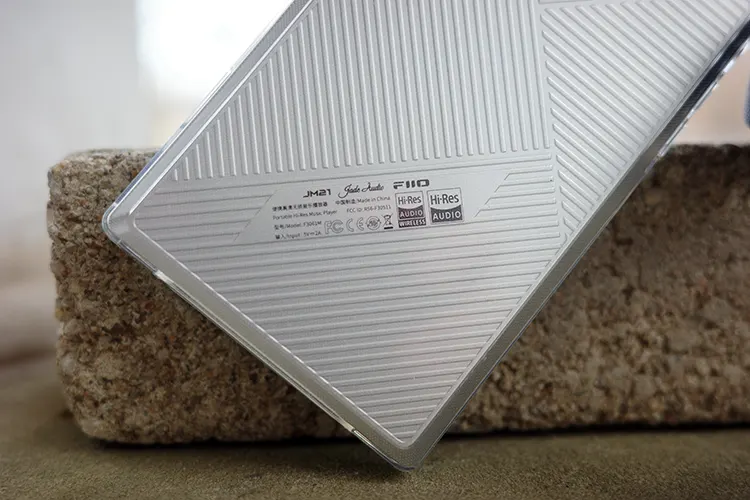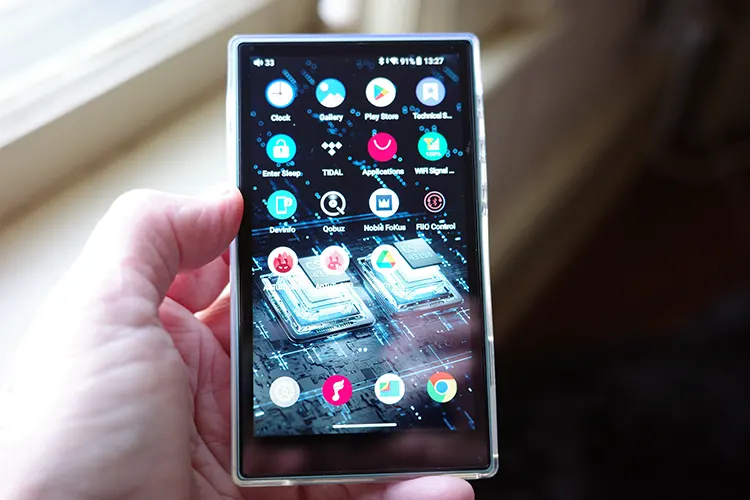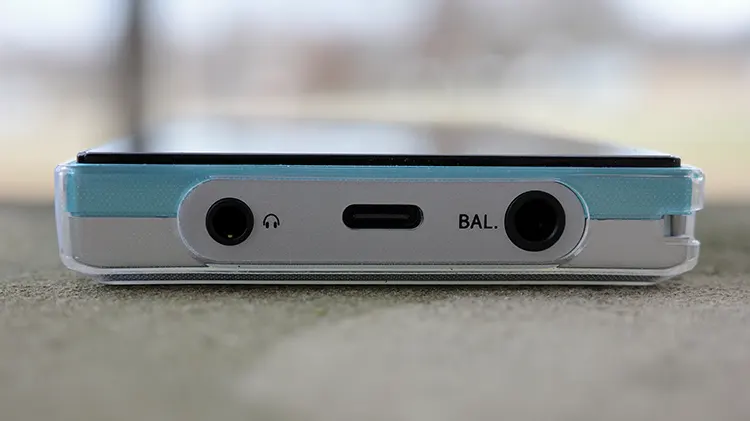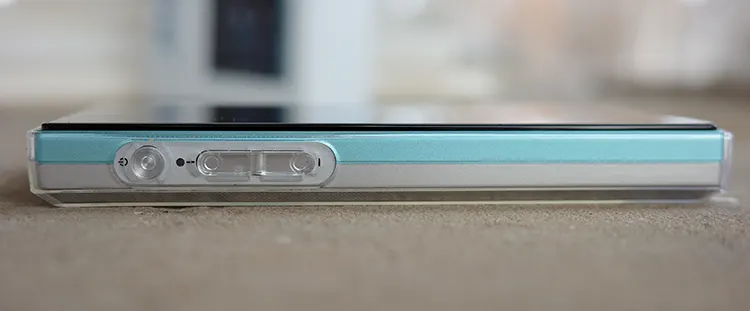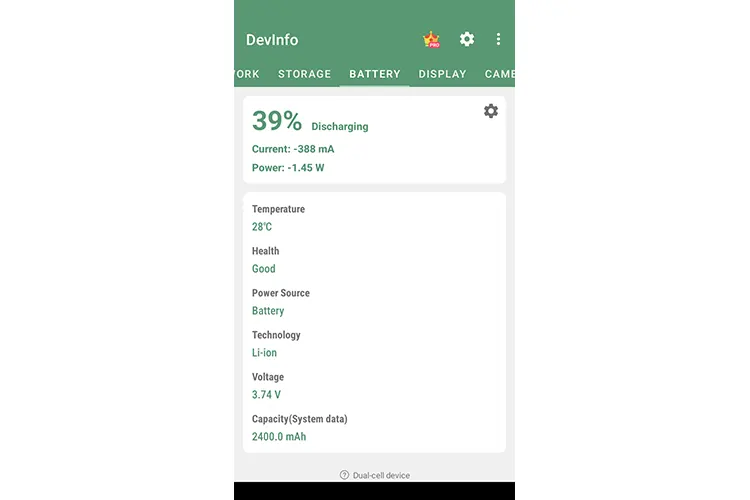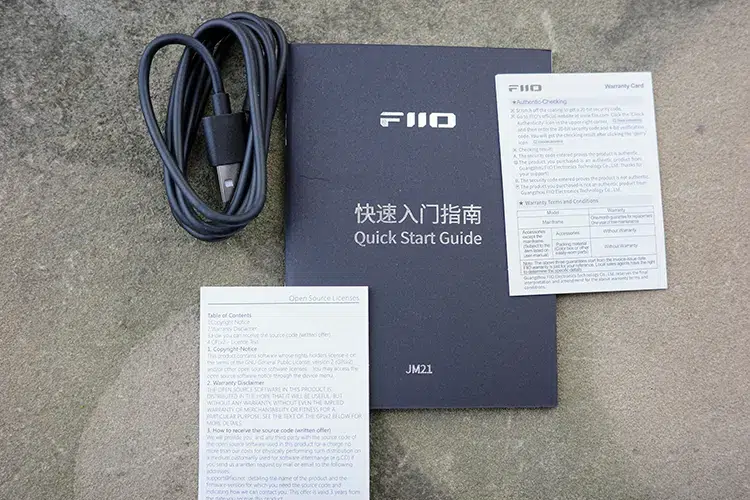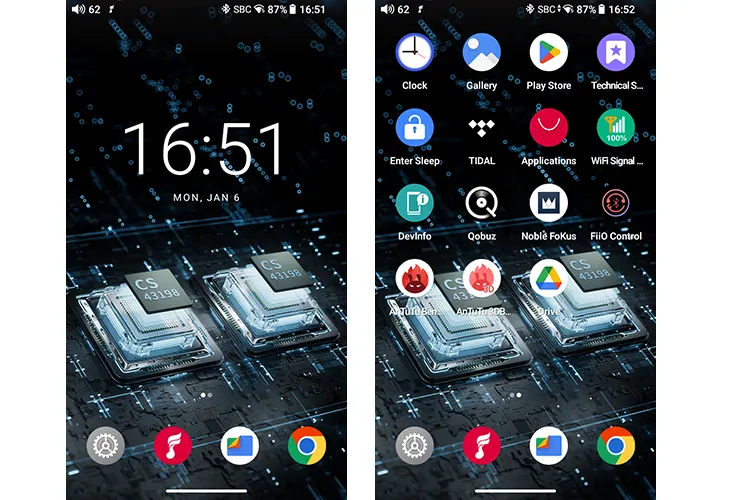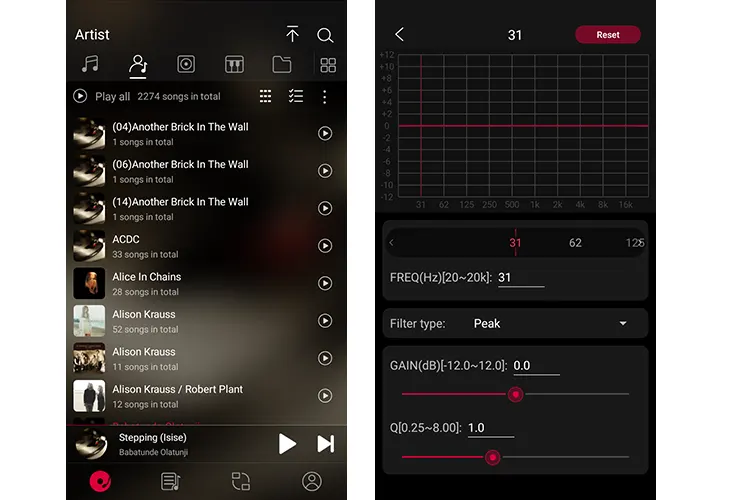Today, Lynn reviews the FiiO JM21, an affordable Android 13 and Snapdragon 680 DAP with a dual DAC and up to 700mW of balanced output power. It is priced at $199.99.
Disclaimer: This sample was sent to me in exchange for my honest opinion. Headfonics is an independent website with no affiliate links or services. I thank FiiO for their support.
You can click here to learn more about the FiiO audio products we have previously reviewed on Headfonics.
This post follows our current scoring guidelines which you can read in more detail here.
FiiO has returned to its roots with a new budget digital audio player under the Jade Audio brand called the JM21.
The JM21 retails for $199.99 but is packed with modern necessities, such as Android 13, a Snapdragon 680 CPU, and the ability to stream over single-end and balanced outputs with up to 700mW of output power.
Small but sized right for tactility purposes, the JM21 caters to those who want a bit more (for less) and excellent sonic characteristics.
FiiO makes some of the best high-end DAPs, such as the M17 and the M15s. Let’s see how that familial resemblance flows down to the JM21.
Features
The JM21 runs Qualcomm’s Snapdragon 680 8-core processor with clock response up to 2.4GHz. With only 3GB of RAM due to cost restraints, FiiO recommends only downloading music streaming apps for use. They also recommend running an app singularly for best performance.
The JM21 provides up to 700mW of power in balanced mode. It can run many harder-to-drive headphones but is meant mostly for IEMs and headphones with easier driveability. Three gain levels help to fine-tune your listening experience.
Dual Cirrus Logic CS43198 DAC chips paired with SGM8262 op-amps run the show in either 3.5mm single end or 4.4mm balanced operation. You can also use the USB-C out to another device such as a desktop amplifier.
Fifth-generation Femtoclocks, shielded power amplifiers, and LDOs keep the JM21 running smoothly. Running a custom Android 13 also helps to keep response times short. I found the unit functioned smoothly and promptly if not lightning fast.
Two-way LDAC Bluetooth (5.0) can be used to connect a source such as your phone, then out to a powered BT set of speakers.
The asynchronous USB-C DAC supports up to 384kHz/32-bit audio if you want to connect the unit to your computer or two-channel system.
Having a higher latency, FiiO recommends against using this for video or gameplay. The JM21 can become a streamer or be used with SPDIF (separate cable) for high-quality audio streaming, though.
A reported run time of up to 12.5 hours can be had with the battery. Testing of that is listed below.
Design
The JM21 is made of aluminum (front half) and plastic (back half), weighing a scant 156g without the included transparent plastic case.
Adding the case, the total comes up to approximately 170g, significantly less than the HiBy R4 (4.7” screen, 129.6×68.3×18.5mm, 231g), and slightly more than the HiBy Digital M300 (4” screen, 113x58x13mm, 136g).
The JM21 feels as good in hand as the R4, and better than the (now) too small to me HiBy M300.
The frosted blue (same as the CP13 I reviewed last year) looks subtle highlighting the edges nicely, while the plastic back half carries the familiar FiiO triangular shapes as trim, with ridges that provide excellent tactility.
The quality is very good, and I appreciated the surface textures. I ended up dropping the M300 a couple of times, on the carpet thankfully, and wish it had a more texturized feel to it.
The JM21 is thin, but I like the look and feel of it, which provided easy access to the buttons (once I became accustomed to their location, more below), carrying a simple understated look to it.
A word about the case though. While it does hold the JM21 in place without bother, it can be removed very easily, and feel that longevity may be an issue. All of the functions, including the micro SD slot, are accessible with the case on though.
It also has a very thin top piece above the jack ports, which is right where one rests their hands. This may become an issue as I feel it is too thin.
The screen also sits above the case level, so a fall onto the front will face the whole brunt of the impact.
Screen
The 4.7” (750×1334 resolution) size matches the HiBy R4 but with greater resolution (720×1080), with good tactility across the whole screen. I read that some might have had an issue at the edges, but I had no such problem.
The haptics of touch can also be adjusted in “Accessibility” under settings, then “timing controls.”
The reaction time to touch was very good with no lag and speedy surfing on the internet while using Qobuz as a streaming source. But, as recommended by FiiO I tried not to use multiple apps at once.
Changing the background along with full Android customization can be had in the menus. But there is no adjusting the color scheme, only adding wallpaper (live and static) to the gallery.
I guess that this was kept simpler because of the low RAM, which allowed the focus to be on the musical side without interruption.
A simple screen, with very good resolution and quality to it, held in check for the music’s benefit.
I/O
The JM21 carries three inputs/outputs on the bottom: a USB-C is used for charging and as a USB DAC (data), a 3.5mm se jack, and a 4.4mm bal jack.
The FiiO also carries dedicated LO options for both ports and the SPDIF option for the 3.5 SE jack. You can choose the mode of operation in settings (right on top), which gives you the choice of Android Mode, Pure Music Mode (for use with a dedicated music option, isolating out all other apps), USB DAC Mode, Bluetooth Receiving Mode, and AirPlay.
Having these options available quickly made the use straightforward without bother.
Controls
A long press (greater than two seconds) starts the process. I did find this to be on the longer side, and the whole startup procedure was done within 45 seconds.
The right side carries the micro-SD slot (up to 2TB, 32GB onboard, 22GB usable) below the REW/play/pause/FF buttons. The SD card slot is accessible with the case on as mentioned above, which is a nice feature to have handy.
The power, and volume up/volume down buttons are located in the top third of the left side. This makes thumb use (for lefties such as me) easy, and finger use (for the rest of you lot) easy, too.
Once I got used to having the power on/off button on the left side, and play/pause in the middle of the right side the use became intuitive.
Numerous customizations can be made, but this is a more bare-bones Android 13 slanted towards the music capabilities.
Battery Life
The 2400mAh battery has a purported run time of 12.5h in single-ended mode, and 9.5h in balanced. It will charge in as little as two hours using a 5V 2A charger.
When running single-ended or through BT-powered speakers I was losing 10-12%/hour, which translates into only 8.5 to 10 hours of run time.
Running balanced I was only able to squeeze 8.75 hours out in balanced or USB mode, which is less than the published numbers but do note this was using the M21 in high gain on all connected gear which would affect performance.
I also noticed that the battery drained more than others when in standby mode. However, updating to 1.0.3 firmware has taken care of this with run times now approaching the advertised numbers. It is nice to have FiiO on top of any potential issues, addressing them quickly.
Packaging & Accessories
The JM21 comes in a two-part package, with a slide-off section carrying the necessary specifications and other items. The inner box then has a paperboard cover, which comes off to reveal the unit set in a soft foam insert.
Well protected, but with a bit of flair due to the paperboard cover.
Under the JM21 is a thin rectangular box, which mimics the JM21 in shape, I got a USB-C to USB-C charge cable, quick start guide, and warranty card.
Software Impressions
Running a customized Android 13 is a good idea since Android 12 will no longer be supported soon.
The JM21 uses a Snapdragon 680 CPU combined with 3GB and 32GB ROM (22GB usable at any one time), which is the same as the HiBy R4 (all 32GB usable at once). Functionality was smooth and without bother.
Since there was no bloatware loaded, swiping up from the bottom did nothing but return me to the main screen, which was the time. All apps appear on the “second” screen,” which stays on the whole time unless you swipe up.
Google Play is included, which came up in English for me. I am assuming since it was sent to me that my native English was pre-loaded since the R4 came in Chinese.
Google Play was used to download all apps for use on the device including the music apps, and software, while Google Chrome was used for hardware testing apps.
Once signed in, I had no problem downloading the apps and was presented with a firmware update (currently at FW1.0.3).
UI Flow
Android-based units have always had a large number of customizing options (as it should be), but here the JM21 provides a more streamlined feel. You can still download live wallpaper as screensavers or upload your images for backgrounds, but no extra ones are currently included.
The many accessible sub-menus offered allow for an almost complete customization of the user experience, much like your Smartphone; but less so here, since the main focus is music reproduction.
Swiping down from the top presents the usual submenu options, and swiping down again adds more, allowing the user access to a multitude of functions like any Android OS device.
A handy feature going this route is a button that allows you to quickly choose the mode of use option. So going between BT and USB DAC is quick and easy.
FiiO Music
Jumping into the native FiiO Music app, I quickly scanned my micro-SD card in less than a minute for the 2300 songs.
The app navigation is relatively complex because of all the functions offered but feel the user interface is still not as intuitive as I would like.
Having to scroll through many options with little familiarity didn’t help, but once that was taken care of, functions on the app became better in use.
A nice feature is sorting by genre, which can come in handy when the mood fits. Lacking are the customization features of the HiBy music app, which are gigantic. That said, there is a reason, as the main focus is again the music.
EQ
The EQ is placed under the “user” icon on the bottom right (not applicable to DSD playback). Most apps today require a sign-in for full functionality, but I did not create an account. Even so, there was a vast amount of information and options to be had.
EQ can be changed to Parametric here. You can link to a specific FiiO server for further options, connect a FiiO device under FiiO Control, or change the theme and background.
The “Lab Features” allow for audio effects, DLNA transmitting and receiving, or folder listing in multi-line displays. While this is nice, it seems a bit cumbersome and less than intuitive.
PEQ
This function is very user-friendly, with the ability to change any of ten frequencies (which can be user-defined) with three filter types: Peak, LowShelf, and HighShelf.
In addition, the gain can be altered with a +/-12dB impact and Q from 0.25-8.00. Both of these come in quite handy and allow for customization.
A small number of sound effects can happen as well. Within this submenu, four rotating dials allow for channel balance, bass, treble, and my favorite, Stereo Expand.
All take immediate effect, which is nice to hear. The outer edge of each “dial” is lit going from green to yellow to red; corresponding to increased influence (and potential distortion) on the music being played.
Click on page 2 below for my sound impressions and recommended pairings.






